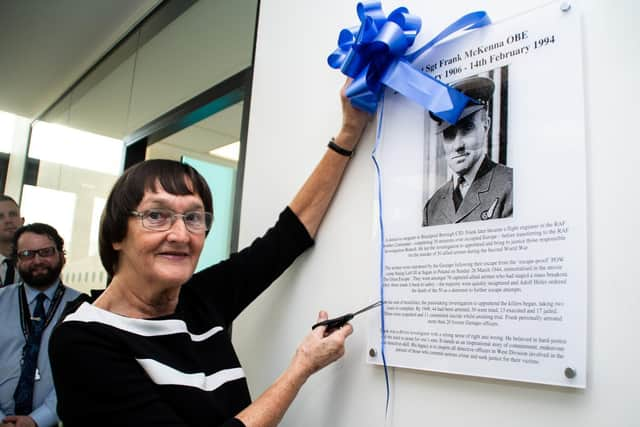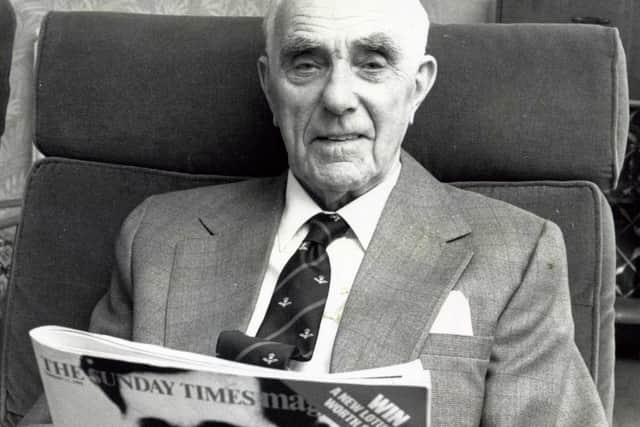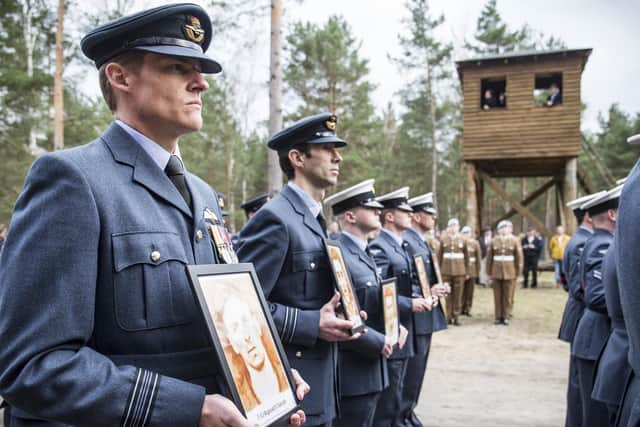Blackpool policeman who tracked down Nazis who killed Prisoners of War involved in The Great Escape during Second World War gets his own plaque in resort


Imagine doing it when you did not speak the lingo, some of the suspects were being held by a hostile nation and all of them were potentially armed members of a fanatical, murderous organisation which had set them up with new identities and documents.
That was the task facing one Blackpool policeman in 1945.
Det Sgt Frank McKenna OBE was among the small unit charged with nothing less than bringing to justice the Gestapo Nazis who murdered 50 of the allied airmen who broke out of Stalag Luft III during the famous Great Escape.


Advertisement
Hide AdAdvertisement
Hide AdAnd he did it. Personally arresting 20 of the Gestapo officers, the largest single total out of 69 secret police thugs brought to justice.
Now, today’s Blackpool detectives will be reminded and inspired by this remarkable man’s exploits every day, for a plaque has been unveiled next to their briefing room in West Division HQ at Gerry Richardson Way.
The unveiling took place amid a crowd of interested officers plus members of the National Association of Retired Police Officers, who all stood for a minute’s silence to honour the airmen killed after the famous tunnel escape attempt.
NARPO chairman Christine Pickard did the honours, while Det Supt Jon Holmes spoke about Frank McKenna’s exploits before he returned to the Blackpool force and lived in Ansdell.


Advertisement
Hide AdAdvertisement
Hide AdHe told how Frank, who died in 1994, had joined the police in Blackpool, following in the footsteps of his father, but was also keen on flying at Squires Gate. When war broke out in 1939 he was refused permission to join the RAF as he was in a reserved occupation due to his police service.
As losses grew through the war, he was eventually allowed to join Bomber Command in 1943 serving as a flight engineer on Lancasters. In 1944 he transferred to the RAF Special Investigation Branch and, 17 months after the murders, he flew to Germany to investigate what is still the worst war crime against British nationals, with a small team of colleagues under Wing Commander Wilfred Bowes.
Det Supt Holmes said: “Straight after the war Germany was in chaos and corruption was rife. To track down these cold-blooded killers was an outstanding piece of police work.
“These were dangerous men, they knew they were likely to face a death sentence. At times he was having to kick down doors with a gun in his hand.


Advertisement
Hide AdAdvertisement
Hide Ad“And at the time, parts of Germany were controlled by the Americans and Russians and they held some of these men. Frank McKenna showed exemplary skills. We have all seen the Great Escape film, but his story would make a fantastic film in its own right.”
Det Supt Holmes said Frank had personal motivation to make sure his mission was a success. Two of the airmen killed by the Gestapo were Flt Lt Edgar Humphreys and Flying Officer Robert Stewart who had flown with him at Squires Gate.
They were among the 76 who escaped through the tunnel at Stalag Luft III. Adolf Hitler himself ordered that 50 should be chosen for execution as an example.
He said: “He was determined to see justice done and avenge his friends. The plaque is next to the briefing room so everyone can see it.”